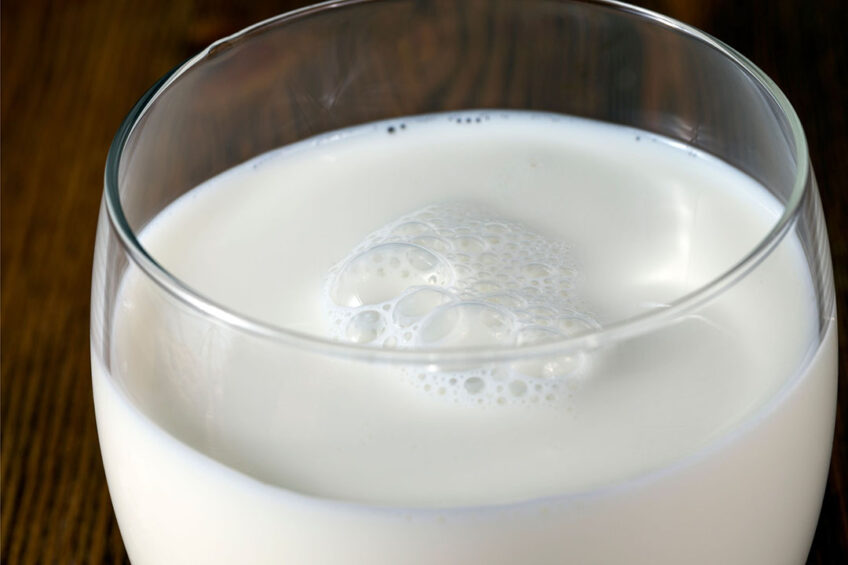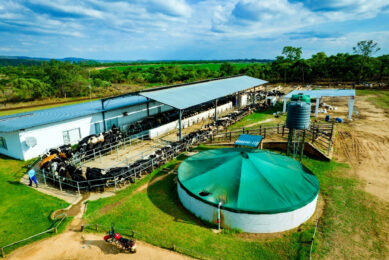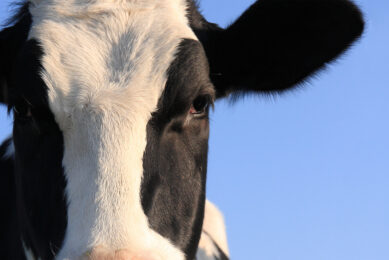How Zimbabwe is boosting milk production

At its peak in 1990, Zimbabwe’s milk production was 260 million litres per year, but in 2008, this dropped to as low as 40 million litres due to a number of factors, including drought, high feed costs and the land reform programme. However, an ambitious project by the government and the EU has produced positive outcomes with milk production significantly growing over the past 3 years.
The aim is to reach a national target of 130 million litres in 2024. This ambitious project by the Zimbabwe government and other development partners involves 1,500 dairy farmers that need to increase the country’s milk production after a slump over more than 2 decades. This project is seeing results with the volume in milk production rising steadily.
Dairy imports
Since early 2000, Zimbabwe has struggled to meet its annual milk production forcing the southern African nation to import dairy products from mostly from South Africa and Belgium, a major dent for a country going through some economic challenges.
In 1990, at its peak, Zimbabwe produced 260 million litres of milk, but in 2008, this dropped to as low as 40 million litres to meet the needs of the country’s 15 million citizens. However, this year, Zimbabwe’s annual milk production is expected to be 105 million litres, an increase that has been noted over the past 3 years.
“The dairy sector is on the recovery path and last year our total production was about 90 million litres of milk against the national annual requirement of 120 million litres. This was a 15% growth from 79.6 million litres that we had in 2021,” the permanent secretary in the Ministry of Lands and Agriculture, John Basera, said in an interview. As a result, milk imports declined last year by 17% from 8.9 million litres to 7.4 million litres.
“So, the sector is actually going for growth and before the 15% growth, we had witnessed another 4% growth. This is actually a testament that as a result of strategic and deliberate strategies and interventions by the government of Zimbabwe through the Ministry of Lands Agriculture, we are winning.”
Feed for dairy cows
The top government official said that his government, with the financial support from the European Union and funded under the Zimbabwe Agricultural Growth Programme (ZAGP) and the Zimbabwe Association of Dairy Farmers, was assisting small-holder dairy farmers with standard packages comprising maize seed, fertilisers and chemicals for them to produce silage for their farm feed formulations.
“The dairy sub-sector has been marred with viability issues whereby feed prices were going up, but the litre price of milk was remaining stagnant. So, we needed to close that viability gap. The support went a very long way in terms of closing the gap and in terms of expanding the dairy production sub-sector,” Basera added.
“So, the small-holder dairy farmers contributed quite immensely, their productivity and their milk productivity levels of litres of cow per day went up quite significantly from 8 litres per cow per day to 12 litres, which is now quite incredible and contributed the big success and the 15% jump from 79.6 million litres to now 90.1 million litres, and that was as of December 2022.”
Breaking down the figures further, Basera explained that the month-on-month milk growth this year witnessed a significant growth surge of between 11 and 12% month-on-month compared to last year.
“We are seeing that our month-on-month figures have actually grown at the above measure of over 11% as comparable with last year. So, we are going for growth and we are definitely hitting our target of 105 million litres this year, and next year our national target is 120 million,” he said.
Quality, renewable energy and costs
“We are very positive, but we also went further last year as part of our strategic interventions and supported the medium to large-scale farmers under the command agriculture model wherein they were supported with inputs for silage production and own feed production and the financial-aid scheme was administered by two commercial banks. The programme paid dividends and hence this growth of 15% from 76 million,” he added.
Basera noted that the end product of the project was improving Zimbabwe’s milk quality, adoption of low-cost renewable energy for milk cold chain development and reducing costs.
Other success stories recorded to date from the project besides improved milk production are increased productivity, profitability and access to finance.
Increasing the dairy herd
In separate interviews with some of the beneficiary farmers of the scheme, most were increasing their cows to increase milk production.
Lydia Nheta started her project in 2021 with only 1 heifer donated through the EU. Her milk production then it was as little as 10 litres per day. However, she has managed to purchase more animals and milk production has increased to 14,000 litres per month from a herd of 35 milking cows and is working on expanding her herd.
“It is better to start small. This has allowed us to grow slowly as we learn through our mistakes towards being able to manage larger herds and handle bulk milk produce efficiently,” she said.
Another farmer, Dorothy Mupfanochiya, said she started her project in 2019 also with 1 cow but it has since grown to 34.
“I encourage more women to start dairy farming. Let us push for mechanisation so that we can handle the heavy demands that come with the use of technology.”
With the EU funding, the Zimbabwean government is also working on improving its national dairy livestock genetics and has to source 200 in-calf heifers from the Eastern Cape in South Africa. The cows were distributed to selected small-scale dairy farmers through a heifer matching facility.
Join 13,000+ subscribers
Subscribe to our newsletter to stay updated about all the need-to-know content in the dairy sector, two times a week.










